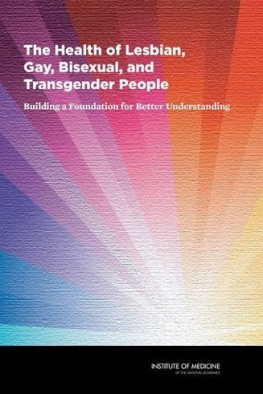YOU CAN TELL JUST BY LOOKING
And 20 Other Myths about LGBT Life and People
Michael Bronski
Ann Pellegrini
Michael Amico
BEACON PRESS
BOSTON
CONTENTS
INTRODUCTION
In the 1890s, Lord Alfred Douglas famously described same-sex attraction as the love that dare not speak its name. Since that time there has been a whole lot of talking. By the early 1970s, homosexuality had become, as many quipped, the love that wont shut up. American public lifethe context for this bookis filled with claims and counterclaims about the nature and naturalness of homosexuality, the morality of same-sex marriage, and, increasingly, whether transgenderism is a disorder or just one gender identity among others. Acrimonious debates over these questions take place in arenas as diverse as pop culture, professional sports, and legislative politics.
In one of the most talked-about moments of the 2011 Grammy Awards, pop diva Lady Gaga bursts out of a shimmering, translucent egg to the propulsive beat of her LGBT anthem, Born This Way. Later that year, she establishes the Born This Way Foundation to improve the lives and safety of LGBT youth. A lot of LGBT people dance to Gagas beat; they deeply feel they were born attracted to the same sex or with a gender different from what others assigned to them, and embrace that identity and experience. Other LGBT people do not believe that, and with just as much Gagalike conviction claim they have chosen to be LGBT.
In September 2012, Brendon Ayanbadejo, a linebacker for the NFLs Baltimore Ravens, attracts the ire of a Democratic legislator in the Maryland General Assembly, Emmett C. Burns Jr. Ayanbadejos offense? He has become a very public advocate for same-sex marriage. Another football player, Minnesota Vikings punter Chris Kluwe, gets in on the act, writing a colorful open letter to Burns. In it, Kluwe offers his support to Ayanbadejo and for same-sex marriageand schools Burns on the meaning of free speech. Still, all is not homo-cosy in the hypermasculine world of professional sports. Just a week after the dust-up between Ayanbadejo and Burns, Toronto Blue Jays shortstop Yunel Escobar sports black eye tape during a game with an antigay slur written on it in Spanish. He is suspended for three games.
In June 2013, the Supreme Court rules on two important marriage-equality cases. Holding that the third section of the 1996 Defense of Marriage Act (DOMA) is unconstitutional, the Court now allows legally married same-sex couples access to all federal benefits available to heterosexual married couples, including a multitude of tax and Social Security benefits. The decision also eases the immigration process for binational couples. (In a striking coincidence, the DOMA decision is handed down ten years to the day that the Supreme Court, in Lawrence v. Texas, overturned laws criminalizing consensual homosexual sex.) In the second highly watched case, the Court rules on Proposition 8, which defined marriage in California as only between a man and a woman, and reversed a ruling allowing marriage equality. Side-stepping the substance of the casethe constitutionality of state bans on same-sex marriagethe Court holds that the groups bringing suit to defend Proposition 8 do not have the legal standing to do so. This narrow decision leaves in place a lower court ruling overturning Proposition 8 and opens the way to same-sex marriages in California again. The decision does not affect marriage equality in other states because the regulation of marriage is traditionally left to the states. As a result, marriage equality for same-sex couples remains a state-by-state proposition, with only thirteen states and the District of Columbia currently permitting same-sex couples to marry.
In July 2013, the Employment Non-Discrimination Act, which would bar most public and private employers from discriminating against potential or current employees on the basis of sexual orientation and gender identity, finally makes it out of a Senate committee for a full vote by the Senate. As this book goes to press, a vote by the full Senate has not yet been scheduled, though Senate Majority Leader Harry Reid has confirmed his interest in doing so soon. Even if the bill succeeds in the Senate, however, it has no chance of passage in the Republican-controlled House of Representatives. Supporters have been trying to pass a version of this law since 1974. In an end run around earlier congressional inaction, the federally appointed Equal Employment Opportunity Commission had already ruled, in April 2012, that Title VII of the 1964 Civil Rights Act, which prohibits discrimination on the basis of sex, applies to gender identity as well. In practice, this means that government agencies can no longer discriminate against transgender employees or applicants because of their gender identity. The ruling does not apply to employees of private companies.
As the preceding examples show, we are in the midst of simultaneous, rapid legal and social changes, even as pernicious stereotypes and outright inequality persist.
This book is an attempt to help readers clear through the thicket of these and many other hot-button issues. We want to dispel harmful, often hostile, myths, stereotypes, and false assumptions about LGBT people. But we also want to explain what myths do, how they work and move in the world, and why the myths in this book remain so compelling even when they are shown to be false. How and why do gut feelings solidify into hard-and-fast facts about the world? How has society allowed some myths that are manifestly untrue to flourish and circulate as fact?
The challenge of this book is about more than beating back anti-LGBT lies. We also scrutinize the claims that LGBT people make about themselves. What myths do they believe about their own lives and culture, and why?
Before we discuss specific myths, we need to give some brief background about LGBT people and their culture. A large and still growing body of scholarship shows that the meanings of same-sex desire and gender variation are culturally and historically particular. Its not just that the names lesbian, gay, bisexual, and transgender are relatively new additions to the English language; so are the identities they name.
Hungarian social reformer Karl-Maria Kertbeny coined the word homosexual in 1868, using it publicly in a political pamphlet the following year to promote homosexual emancipation. Kertbenys acts of classification and naming were done in the service of homosexual rights. But his model of innate sexual desires opened the door for early sexologists, women and men who attempted to look at sex and human nature in a scientific manner, to identify homosexuality as a type of sexual abnormality and pathologize gender deviancy as one of its manifestations.
Categories and labels are not static. From the early decades of the twentieth century forward, LGBT people have contested these negative judgments and fought to wrest control over their own names and identities. In so doing, they have been able to secure increased visibility and acknowledgment in culture and society. These important efforts to reclaim and revalue terms once used to disparage them have also reinforced the idea that sexual identity marks the definitive truth about a person and provoked increasing debates about this truth.
In June 2012, CNN anchor Anderson Cooper disclosed he was gay, to the surprise of some and the about time response of others. Cooper, for his part, was walking a tightrope, trying to destigmatize gayness (his own and others) while simultaneously preserving the aura of neutrality and objectivity of someone who reports the news, rather than makes it. But is a homosexual identity ever a neutral standpoint?


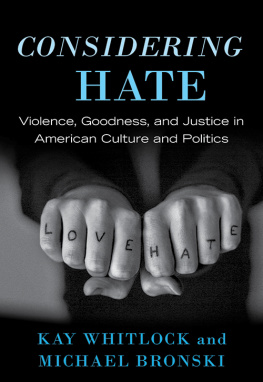
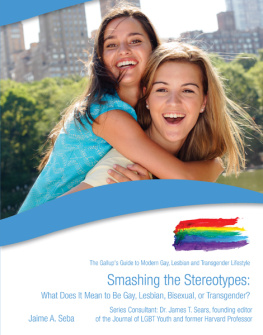

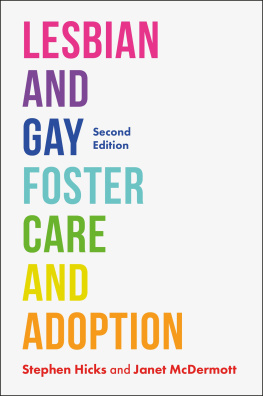
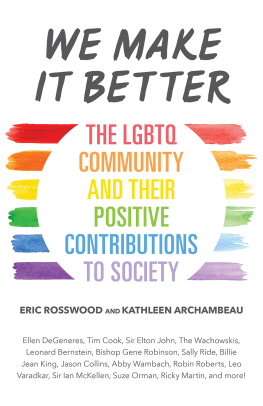
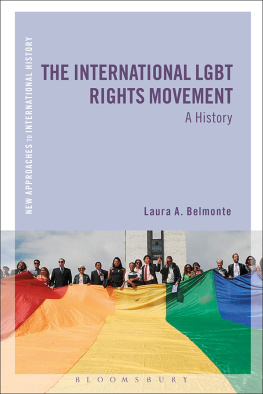

![Chuck Stewart - Lesbian, Gay, Bisexual, and Transgender Americans at Risk [3 Volumes]: Problems and Solutions](/uploads/posts/book/129596/thumbs/chuck-stewart-lesbian-gay-bisexual-and.jpg)

